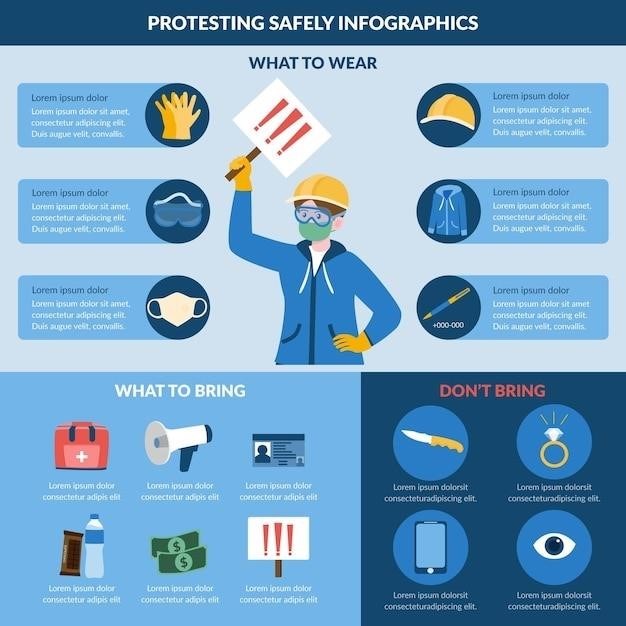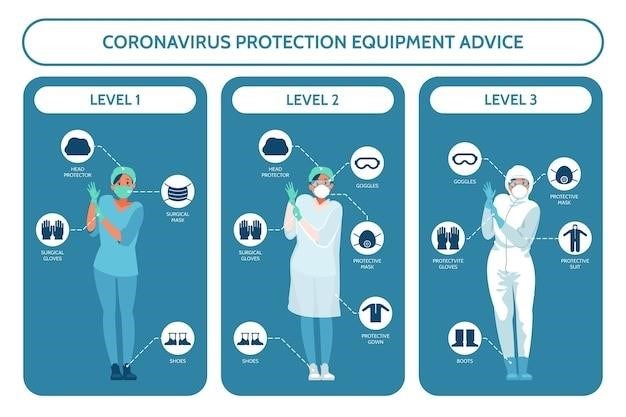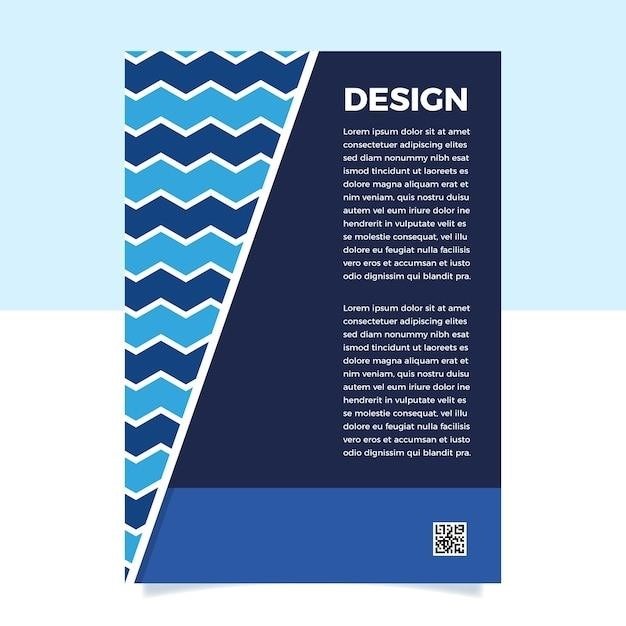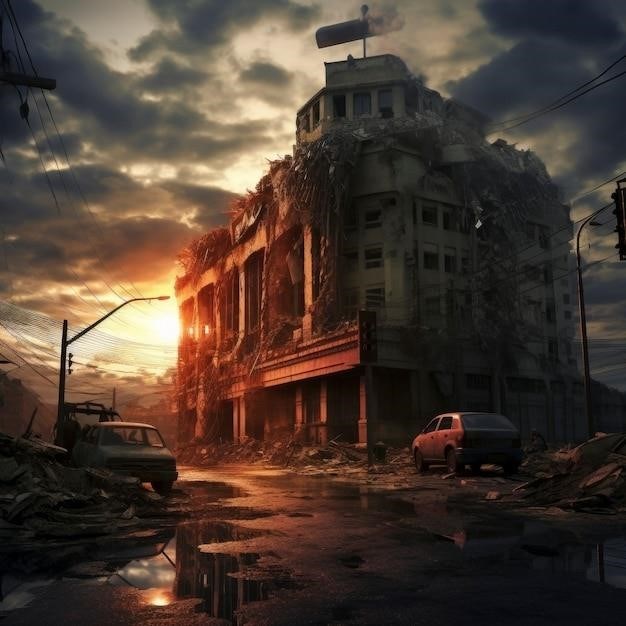Introduction to NFPA 13 Occupancy Hazard Classifications
NFPA 13‚ the Standard for the Installation of Sprinkler Systems‚ plays a crucial role in fire safety by establishing guidelines for sprinkler system design․ A critical component of this standard is the classification of occupancies based on their potential fire hazards․ This document delves into the concept of NFPA 13 occupancy hazard classifications‚ exploring their importance‚ definitions‚ and impact on sprinkler system design․
Understanding the Concept of Occupancy Hazard Classification
NFPA 13’s occupancy hazard classification system categorizes buildings and spaces based on the potential fire hazards they present․ This classification is crucial for sprinkler system design‚ as it determines the level of fire protection required to ensure the safety of occupants and property․ The classification considers factors such as the combustibility of materials present‚ the quantity of combustibles‚ and the rate of heat release in the event of a fire․ By understanding the hazard classification‚ designers can tailor sprinkler systems to effectively mitigate fire risks in different occupancies․
The Importance of NFPA 13 in Fire Sprinkler Design
NFPA 13 serves as the cornerstone for fire sprinkler system design‚ providing comprehensive guidelines for ensuring effective fire protection․ The standard addresses various aspects of sprinkler system installation‚ including pipe sizing‚ sprinkler spacing‚ and water flow requirements․ By adhering to NFPA 13‚ designers can create sprinkler systems that effectively suppress fires‚ limit the spread of flames‚ and protect occupants and property from the devastating effects of fire․
Defining the Hazard Classifications
NFPA 13 outlines five distinct hazard classifications⁚ Light Hazard‚ Ordinary Hazard (Group 1 and 2)‚ and Extra Hazard (Group 1 and 2)‚ each representing a different level of fire risk․
Light Hazard
Light Hazard occupancies are characterized by a low quantity and combustibility of contents‚ resulting in fires with relatively low rates of heat release․ Examples include office areas‚ churches‚ and corridors․ These spaces typically have minimal combustible materials and are not expected to experience intense or rapidly spreading fires․ The fire hazard is considered minimal‚ making them suitable for light hazard sprinkler system design;
Ordinary Hazard (Group 1)
Ordinary Hazard (Group 1) occupancies are defined as spaces where the combustibility of materials is low‚ but the quantity of combustibles is moderate․ Fires in these areas are expected to have moderate rates of heat release‚ but the risk of a major fire is less than in Group 2․ Examples include storage rooms with a ceiling height of 12 feet or less‚ soiled linen rooms‚ and meeting rooms․ The design of sprinkler systems in these areas must account for the increased potential for fire spread compared to Light Hazard occupancies․
Ordinary Hazard (Group 2)
Ordinary Hazard (Group 2) occupancies are characterized by a moderate level of combustibility and a significant quantity of combustible materials․ These spaces are expected to experience fires with higher rates of heat release than Group 1 occupancies․ Examples include manufacturing areas with a moderate fuel load‚ storage rooms with a high density of combustibles‚ and retail spaces with extensive inventory․ The design of sprinkler systems in these areas must account for the increased fire hazard and potential for rapid fire growth․
Extra Hazard (Group 1)
Occupancy classifications categorized as Extra Hazard (Group 1) pose a high risk of fire due to the presence of highly combustible materials․ These areas often contain large quantities of flammable liquids or gases‚ presenting a significant hazard in the event of a fire․ Examples include paint spray booths‚ chemical processing plants‚ and areas where flammable liquids are stored or handled․ The sprinkler systems in these areas must be designed to withstand the intense heat and rapid fire spread associated with these high-hazard occupancies․
Extra Hazard (Group 2)
Extra Hazard (Group 2) classifications represent the highest fire hazard level within the NFPA 13 framework․ These occupancies are characterized by the presence of extremely flammable materials‚ often in large quantities․ Examples include areas where highly volatile flammable liquids are stored‚ such as fuel storage tanks or chemical processing plants․ Sprinkler systems in these areas require the most robust design features‚ including high water flow rates and quick response times to effectively control fire spread and protect life and property․
Factors Determining Occupancy Hazard Classification
NFPA 13 uses a combination of factors to determine the appropriate occupancy hazard classification‚ ensuring that the sprinkler system design effectively mitigates the specific risks associated with the building’s intended use․
Combustibility of Contents
The inherent combustibility of the materials stored or used within an occupancy is a primary factor in determining the hazard classification․ NFPA 13 considers the ease with which materials ignite and sustain combustion‚ as well as their potential to generate significant heat and smoke․ Highly combustible materials‚ such as flammable liquids or plastics‚ will necessitate a higher hazard classification compared to less combustible items like concrete or metal․
Quantity of Combustibles
The amount of combustible materials present in an occupancy directly influences the potential severity of a fire․ NFPA 13 recognizes that a larger quantity of combustibles will result in a more intense and prolonged fire‚ requiring a higher hazard classification․ This is often expressed in terms of “wood equivalent‚” where the total weight of combustible materials is compared to an equivalent amount of wood․ For example‚ a large warehouse storing significant quantities of wood products would be classified as a higher hazard than a small office with minimal furniture․
Rate of Heat Release
The rate at which a fire releases heat is a critical factor in determining the hazard classification․ Fires involving materials that release heat rapidly‚ such as flammable liquids or certain plastics‚ pose a greater risk than those with slower burning materials․ NFPA 13 considers the rate of heat release in determining the appropriate hazard classification․ For instance‚ an occupancy storing large quantities of flammable liquids would be classified as a higher hazard than an office space with primarily wood-based furniture‚ even if the total quantity of combustibles is similar․
Examples of Occupancy Hazard Classifications
Understanding the application of NFPA 13 hazard classifications is best achieved through real-world examples․
Light Hazard Examples
Examples of light hazard occupancies include areas with minimal combustible materials and low fire risk․ These often have low rates of heat release and are generally considered safe․ Examples include⁚
- Church seating areas
- Corridors
- Office areas
- Dwelling units
These spaces typically have low fuel loads and are not expected to generate significant fire hazards․
Ordinary Hazard (Group 1) Examples
Occupancy hazard classifications are based on the potential fire intensity and fuel load of a space․ Ordinary Hazard (Group 1) spaces are characterized by moderate quantities of combustible materials․ Examples include⁚
- Retail stores
- Warehouses storing non-flammable materials
- Office buildings with moderate furniture and furnishings
These areas have a higher potential for fire than light hazard occupancies‚ but the fire risk is considered manageable with appropriate sprinkler system design․
Ordinary Hazard (Group 2) Examples
Ordinary Hazard (Group 2) spaces represent a step up in potential fire severity compared to Group 1․ These areas typically contain larger quantities of combustible materials or have a higher potential for fire spread․ Examples include⁚
- Warehouses storing flammable liquids in limited quantities
- Manufacturing facilities with moderate quantities of combustible materials
- Storage rooms with combustible materials exceeding 8 feet in height
The increased fire hazard necessitates a more robust sprinkler system design to ensure effective fire suppression․
Extra Hazard (Group 1) Examples
Extra Hazard (Group 1) occupancies present a significant fire risk due to the presence of large quantities of highly combustible materials or processes that generate intense heat; Examples include⁚
- Paint spray booths with flammable coatings
- Chemical processing plants handling volatile substances
- Warehouses storing large quantities of flammable liquids
These spaces require specialized sprinkler system designs with increased flow rates and densities to effectively combat the high fire intensity․
Extra Hazard (Group 2) Examples
Extra Hazard (Group 2) occupancies pose the highest fire risk due to the presence of exceptionally large quantities of highly combustible materials or processes generating extremely high heat․ Examples include⁚
- Manufacturing facilities producing or storing large quantities of flammable liquids
- Power plants utilizing combustible fuels
- Warehouses storing large quantities of highly flammable solids
These spaces demand the most robust sprinkler system designs with exceptionally high flow rates and densities to effectively control a fire․
The Role of Commodity Classifications
While occupancy classifications provide a broad understanding of fire hazards‚ commodity classifications offer a more detailed approach‚ focusing on the specific materials present within a space․
Understanding Commodity Classifications
Commodity classifications within NFPA 13 provide a more granular level of detail regarding the specific materials present in a given occupancy‚ their packaging‚ and storage methods․ This information is essential for accurately assessing fire hazards and designing appropriate sprinkler systems․ By considering the types and quantities of materials‚ their combustibility‚ and how they are stored‚ commodity classifications help to refine the overall fire hazard assessment․
Relationship Between Occupancy and Commodity Classifications
Occupancy and commodity classifications work together to provide a comprehensive understanding of fire hazards․ While occupancy classifications offer a broad overview of potential fire severity‚ commodity classifications provide a more specific assessment by focusing on the types and quantities of materials present․ This combined approach ensures that sprinkler system designs are tailored to the unique characteristics of each occupancy and its contents‚ leading to more effective fire protection․
Impact of Occupancy Hazard Classification on Sprinkler System Design
Occupancy hazard classification directly influences the design of sprinkler systems‚ impacting key aspects like system layout‚ component selection‚ and overall cost․
Design Considerations for Different Hazard Classifications
NFPA 13 outlines specific design considerations for each hazard classification․ Light hazard occupancies‚ with low fuel loads‚ may require less extensive sprinkler systems․ Conversely‚ extra hazard occupancies‚ characterized by high fuel loads and potential for intense fires‚ necessitate robust sprinkler systems with higher flow rates and denser coverage․ These considerations ensure that sprinkler systems are adequately designed to protect occupants and property from fire hazards․
Influence on System Layout‚ Components‚ and Cost
The occupancy hazard classification significantly influences the design of a sprinkler system‚ impacting its layout‚ components‚ and ultimately‚ its cost․ For instance‚ an extra hazard occupancy might require a more complex system with larger pipes‚ higher flow rates‚ and specialized sprinkler heads‚ leading to increased installation costs․ Conversely‚ a light hazard occupancy might necessitate a simpler system with smaller pipes and standard sprinkler heads‚ resulting in lower costs;

NFPA 13 and Other Codes and Standards
NFPA 13 is not an isolated code‚ but rather interacts with other building codes and standards‚ particularly the International Building Code (IBC)․ This interaction is crucial for ensuring a cohesive approach to fire safety․
Relationship Between NFPA 13 and IBC
NFPA 13 and the International Building Code (IBC) are interconnected in the realm of fire safety․ While NFPA 13 focuses on sprinkler system design‚ the IBC provides overarching building codes that include fire safety requirements․ In many jurisdictions‚ both NFPA 13 and the IBC are adopted‚ creating a need for coordination between the two․ The IBC often references NFPA 13 for specific sprinkler system requirements‚ ensuring a consistent and effective approach to fire safety within building construction and design․
Comparison with Other Fire Safety Codes
NFPA 13‚ while a cornerstone of fire sprinkler system design‚ exists within a broader landscape of fire safety codes and standards․ Other relevant codes‚ such as the National Fire Protection Association’s (NFPA) 101 Life Safety Code and the International Fire Code (IFC)‚ address various fire safety aspects․ While NFPA 13 focuses specifically on sprinkler systems‚ these other codes provide comprehensive guidelines for building construction‚ fire alarm systems‚ and overall fire safety measures․ Understanding the interplay between NFPA 13 and these other codes is essential for achieving a holistic approach to fire safety․
Understanding NFPA 13 occupancy hazard classifications is paramount for fire safety professionals and building owners․ Proper classification ensures effective sprinkler system design‚ mitigating fire risks and protecting lives and property․
Summary of NFPA 13 Occupancy Hazard Classifications
NFPA 13 defines five occupancy hazard classifications⁚ Light Hazard‚ Ordinary Hazard (Group 1)‚ Ordinary Hazard (Group 2)‚ Extra Hazard (Group 1)‚ and Extra Hazard (Group 2)․ These classifications are based on the combustibility of contents‚ quantity of combustibles‚ and expected rate of heat release․ Light hazard occupancies have low combustible contents‚ while extra hazard occupancies have very high combustibles․ The classification determines the sprinkler system design‚ including layout‚ components‚ and cost․
Importance of Understanding Hazard Classifications for Fire Safety
Accurately classifying occupancy hazards is essential for effective fire safety․ It allows for the design of sprinkler systems that are tailored to the specific risks of each building․ Misclassifying a hazard can lead to inadequate sprinkler system design‚ resulting in insufficient protection during a fire․ Proper classification ensures that the sprinkler system is appropriately sized‚ equipped‚ and strategically placed to effectively suppress fires and minimize damage to life and property․







